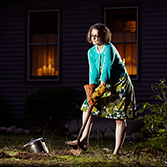Selected Articles Archives
Selected articles from my journalism career, with topics ranging from heavy metal to cold cases to samurai armor.More in "Selected Articles"
- Actress Alyson Hannigan takes out restraining order against Nashua man
- State of the Arts: How does Nashua not have an arts center?
- St. Christopher Church group in Nashua creates prayer shawls for those with challenges or celebrations
- Christian hip hop artist Lamar Callahan shares music and message
- Former chief, genealogist continue trying to solve state's oldest Jane Doe case
- Parkinson's offers new challenge to artist's creativity
- Former Sepultura frontman Max Cavalera brings family metal show to Nashua
- Opera NH brings “Barber of Seville” to Palace Theatre
- Love of hiking bonds pair, spurs book
- Currier familiar with Japanese art collector, knew exhibit would be high quality
- Samurai weapons, armor focus of new Currier exhibit
Samurai weapons, armor focus of new Currier exhibit
When the Currier Museum of Art tells you not to touch the art in “Lethal Beauty: Samurai Weapons and Armor,” it’s not just for preservation – it’s for your own safety.
With five complete suits of armor, nearly a dozen helmets and masks and numerous swords, sword fittings and battle accessories – all in pristine condition – there are plenty of deadly details to take in.
“Beauty comes in many aspects,” Dr. Kurt Sundstrom, the Currier’s curator, said of the exhibit. “When you look at it, the craftsmanship is so superior to anything that is made today.”
In spite of their aesthetic appeal, the items on display are, essentially, weapons. This combination of beauty and deadliness can result in an odd experience for viewers.
Even though people know these items are dangerous, “you want to get close and look at how beautiful they are,” Sundstrom said.
“It’s a sort of weird sensation that you have,” he added. “You kind of waffle back and forth.”
Sundstrom and the rest of the curatorial staff experienced these mixed emotions while helping Dr. Andreas Marks, director and chief curator at the Clark Center for Japanese Art and Culture in Hanford, Calif., and curator of “Lethal Beauty,” install the exhibit at the Currier.
He recalled the moment when Marks unpacked a katana – a sword about 3 feet in length – and held it up for them to see.
Everyone backed away, Sundstrom said. “It was almost like someone pulled out a loaded pistol.”
Sundstrom worked up his courage and asked Marks if he could hold the katana. Marks agreed. Even though he was now the one in control of the blade, “I was still scared to death,” Sundstrom said.
Willard “Bill” Clark, founder of the Clark Center, agreed with Sundstrom’s assessment.
“They have made something very beautiful out of a weapon,” Clark said.
“These swordmakers go through years and years of training,” Sundstrom said. “Some of these swords take months to make.”
Even the helmets in the exhibit have been created with care and scrupulous attention to detail. One example from the Edo period (1603-1868) incorporates three functional items into its decorations: a pair of sickles, a sake cup, and a pair of hollow chopsticks that can be filled with gokozui, or scented Buddhist holy water.
The centerpiece of “Lethal Beauty” is a pair of painted screens, also dating from the Edo period, from Clark’s personal collection. The screens portray a number of scenes from “Heike Monogatari,” or “The Tale of the Heike,” a warrior epic chronicling the events of the Genpei War (1180-1185).
Fought between the Minamoto and Taira clans – also known as the Genji and Heike clans – the Genpei War ushered in the samurai era, in which warriors reigned supreme.
The screens are Clark’s main contribution to the exhibit – “I have not been a serious collector of military things,” he said – and, in addition to illustrating an important turning point in Japanese history, afford visitors the opportunity to see how all of the armor and weapons come together and are put to use on the battlefield.
“Lethal Beauty” also shows how after the samurai were officially disbanded in 1876 by Emperor Meiji, swords and other weaponry were recycled and integrated into other items. Two highlights include a flower basin made from pieces of 40 scabbards and a bamboo basket that incorporates arrow shafts.
“The Japanese, I think, are incapable of making something ugly,” Clark said. “They could take the simplest things – a piece of silk, a piece of bamboo – and make the most beautiful things in the world.”
Visitors can reflect on their experience in the discovery gallery just outside the exhibit. Scrolls on the wall explain bushido – “the way of the warrior” – and visitors are encouraged to have a seat on the cushions surrounding the low tables and write their reactions to the bushido code, to be posted on the response wall.
Photography is not permitted in the exhibit proper, but the Currier has made sure people will have an opportunity to snag that perfect commemorative shot. A photo board featuring one of the suits of armor from the exhibit – with the face cut out – sits in the museum entrance.
“The armor was customized to reflect the individual,” Sundstrom said, noting that each samurai’s armor was considered an expression of himself.
The Currier hopes to see many visitors customizing this particular suit of armor and sharing their pictures on social media to spread the word about this rare opportunity to get up close and personal with samurai culture.
The exhibit, which originated at the Clark Center, will be on display through May 5. In addition to museum admission, there is a $5 special exhibition charge for adults to view the exhibit. Children 17 and younger get in free to the museum and to “Lethal Beauty.”
For more information, visit www.currier.org or call 669-6144. To learn more about the Clark Center, visit www.ccjac.org.
– Teresa Santoski
Originally published Feb. 17, 2013 in The Telegraph, Nashua, NH.
Browse the compendium
Compendium (noun): a summary or abridgment.
Click the icons to the right to check out a sampling of my work.




